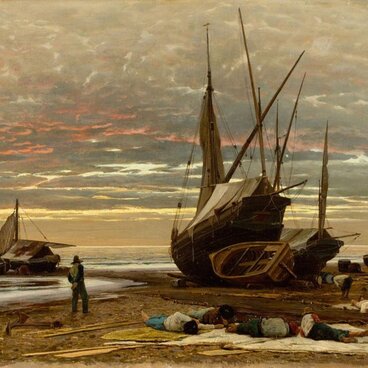The exhibition of the Sevastopol Art Museum named after Mikhail Pavlovich Kroshitsky features a painting titled “Embankment. Quay in Ajaccio” by Ivan Ivanovich Yendogurov.
A talented landscape painter, a contemporary of Isaac Levitan and Konstantin Korovin, Ivan Yendogurov continued the traditions of sentiment landscape, combining them with the artistic discoveries of the Barbizonians. His later works were painted in Europe, and these can generally be called a sad song, “poetry of sorrow”. Regardless of where they were created, they were filled with a resonating “Russian yearning”. It is no coincidence that the popular St. Petersburg magazine “Art Review”, responding to the passing of the artist with an impressive article, noted that “it was probably the premonition of an early death that filled his landscapes with a quiet disturbing sadness.“
In 1892 and 1893, Ivan Yendogurov was treated in Corsica. Despite the severe illness, he made numerous studies and used them to create “Quay”, a painting that depicts an autumn weekday on the dock in a fairly large port city of Ajaccio, located on the west coast of the island in the Mediterranean Sea. In this work, though of a rather simple plot, the artist’s thoughts about contemporary life were intertwined with his love for nature, somewhat disturbed by rain and smoky steamships. The state of nature is inseparable from the state of people working in the port and just walking under umbrellas along the quay. Their languishing, a kind of despondency, inner closedness, concentration on their mental experiences are part of a holistic emotional image, which complements the finely nuanced tonal coloring.
The work from the Sevastopol collection was most likely exhibited in St. Petersburg and Moscow at the 20th Exhibition of the Society for Traveling Art Exhibitions, but under a different title — “Steamship Wharf in Ajaccio, Corsica”. Landscapes created by the artist in the last years of his life are mostly devoid of outward beauty, but still draw the attention of not only experts but many art lovers as well. After all, subtle mental work, the ability to feel and express sympathy, compassion, and empathy are often more important to the viewer than superficial effects.




